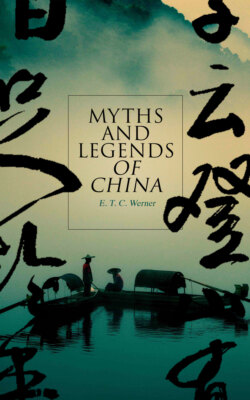Читать книгу Myths and Legends of China - E. T. C. Werner - Страница 15
На сайте Литреса книга снята с продажи.
Marriage in Early Times
ОглавлениеCertain parts of the marriage ceremonial of China as now existing indicate that the original form of marriage was by capture—of which, indeed, there is evidence in the classical Book of Odes. But a regular form of marriage (in reality a contract of sale) is shown to have existed in the earliest historical times. The form was not monogamous, though it seems soon to have assumed that of a qualified monogamy consisting of one wife and one or more concubines, the number of the latter being as a rule limited only by the means of the husband. The higher the rank the larger was the number of concubines and handmaids in addition to the wife proper, the palaces of the kings and princes containing several hundreds of them. This form it has retained to the present day, though associations now exist for the abolition of concubinage. In early times, as well as throughout the whole of Chinese history, concubinage was in fact universal, and there is some evidence also of polyandry (which, however, cannot have prevailed to any great extent). The age for marriage was twenty for the man and fifteen for the girl, celibacy after thirty and twenty respectively being officially discouraged. In the province of Shantung it was usual for the wives to be older than their husbands. The parents' consent to the betrothal was sought through the intervention of a matchmaker, the proposal originating with the parents, and the wishes of the future bride and bridegroom not being taken into consideration. The conclusion of the marriage was the progress of the bride from the house of her parents to that of the bridegroom, where after various ceremonies she and he worshipped his ancestors together, the worship amounting to little more than an announcement of the union to the ancestral spirits. After a short sojourn with her husband the bride revisited her parents, and the marriage was not considered as finally consummated until after this visit had taken place.
The status of women was low, and the power of the husband great—so great that he could kill his wife with impunity. Divorce was common, and all in favour of the husband, who, while he could not be divorced by her, could put his wife away for disobedience or even for loquaciousness. A widower remarried immediately, but refusal to remarry by a widow was esteemed an act of chastity. She often mutilated herself or even committed suicide to prevent remarriage, and was posthumously honoured for doing so. Being her husband's as much in the Otherworld as in this, remarriage would partake of the character of unchastity and insubordination; the argument, of course, not applying to the case of the husband, who by remarriage simply adds another member to his clan without infringing on anyone's rights.
